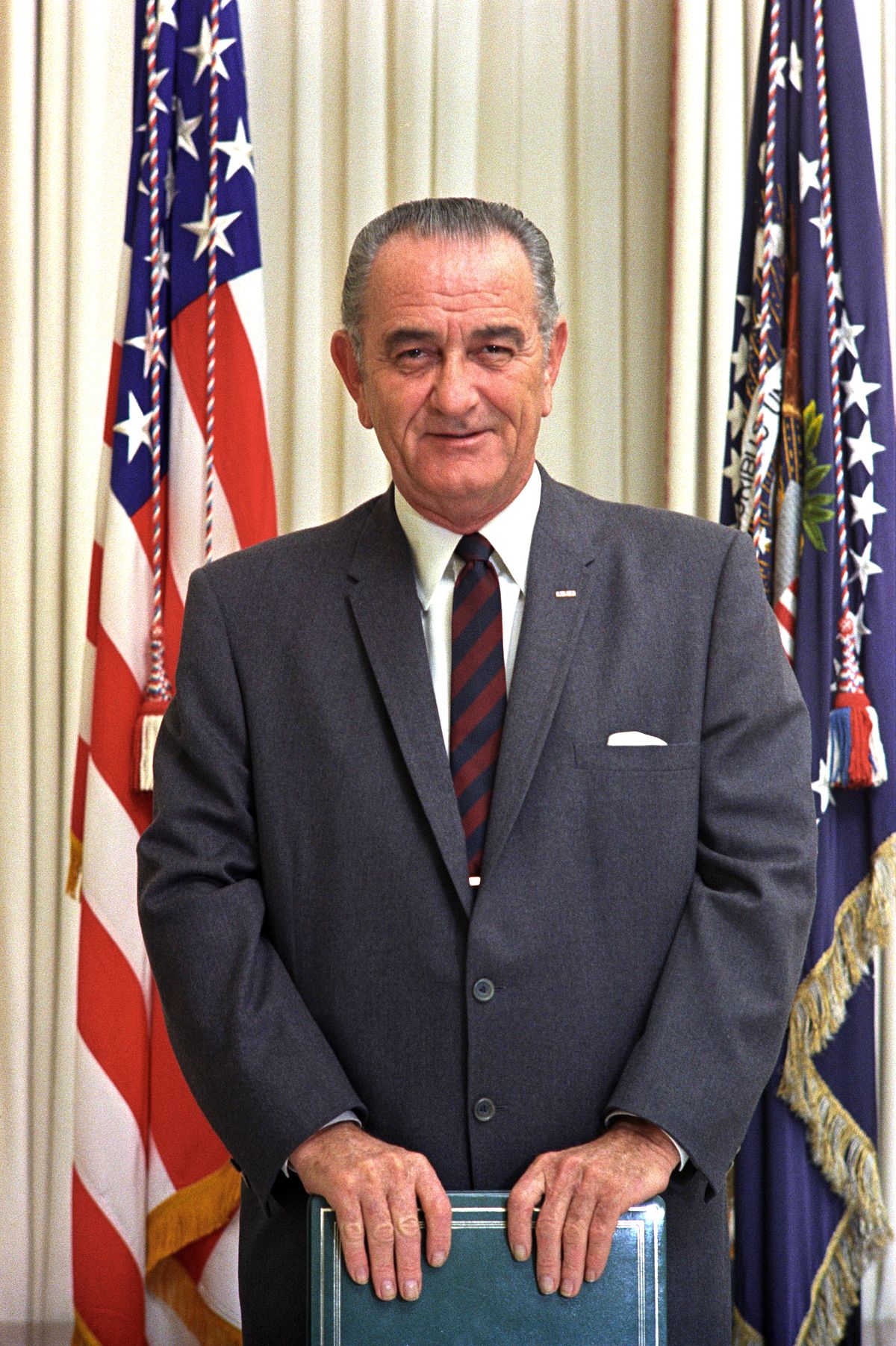
Lyndon B. Johnson Biography
Lyndon Baines Johnson, often referred to by his initials LBJ, was an American politician who served as the 36th president of the United States from 1963 to 1969. He became president after the assassination of John F. Kennedy, under whom he had served as the 37th vice president from 1961 to 1963. 
Early Life & Background
Lyndon B. Johnson was born on August 27, 1908, in Stonewall, Texas. Growing up in rural Texas, he was the oldest of five children. His parents, Samuel Ealy Johnson Jr. and Rebekah Baines, instilled in him a strong work ethic and a passion for politics.
Education
Johnson attended Southwest Texas State Teachers College (now Texas State University), where he earned a degree in education in 1930. His time in college was pivotal, as it exposed him to political ideas and provided opportunities to develop leadership skills. He worked as a teacher for a brief period before fully immersing himself in politics.
Age
Lyndon B. Johnson lived to be 64 years old. His life spanned significant periods of American history, from the early 20th century through the turbulent 1960s, a decade he profoundly influenced as president.
Career
Lyndon B. Johnson began his political career in 1937 when he was elected to the U.S. House of Representatives. He quickly gained a reputation as an effective legislator. In 1948, he moved up to the U.S. Senate and, by 1955, became the Senate Majority Leader. Johnson was known for his skill in building coalitions and passing important laws. He served as Majority Leader until 1961 when he became Vice President under John F. Kennedy.
As vice president under John F. Kennedy, Johnson played a crucial role in promoting civil rights and space exploration. Following Kennedy’s assassination in 1963, Johnson became president. His presidency is best known for the “Great Society” programs, which aimed to eliminate poverty and racial injustice. He also escalated U.S. involvement in the Vietnam War, a decision that remains controversial.
Family
Lyndon B. Johnson married Claudia Alta “Lady Bird” Taylor in 1934. The couple had two daughters, Lynda Bird Johnson and Luci Baines Johnson. Lady Bird was a supportive partner throughout Johnson’s political career, and she made significant contributions to his initiatives, particularly in beautifying America’s cities and highways.
Personal Life
Johnson was known for his larger-than-life personality. He was a complex figure, capable of great warmth and generosity but also known for his intense drive and sometimes abrasive style. He enjoyed the outdoors and spent much of his time at his Texas ranch, which he called the “Texas White House.”
Net Worth
At the time of his death, Lyndon B. Johnson’s net worth was estimated to be around $75 million
Movies
Several movies and documentaries have been made about Johnson’s life and presidency. Notable among them is the HBO film “All the Way,” starring Bryan Cranston, which portrays Johnson’s efforts to pass the Civil Rights Act of 1964.
Awards
Johnson earned many awards, including the Presidential Medal of Freedom and the Congressional Gold Medal, honoring his work in civil rights, education, and social welfare.
Death
Lyndon B. Johnson died on January 22, 1973, at the age of 64, in Johnson City, Texas. His death was attributed to a heart attack. He was buried at the family cemetery on his ranch in Stonewall, Texas.
What is Lyndon B. Johnson Best Known For?**
Lyndon B. Johnson is best known for his “Great Society” programs and his role in passing landmark civil rights legislation, including the Civil Rights Act of 1964 and the Voting Rights Act of 1965. These efforts significantly advanced the cause of civil rights in the United States.
What Did Lyndon B. Johnson Do After JFK Died?
After JFK’s assassination, Lyndon B. Johnson became the 36th president of the United States. He immediately took steps to continue Kennedy’s policies and pushed forward with his own ambitious agenda, which included significant social reforms and the escalation of the Vietnam War.
Who Was President After Lyndon B. Johnson?
Richard Nixon succeeded Lyndon B. Johnson as president. Nixon, a Republican, won the 1968 presidential election and was inaugurated on January 20, 1969.
Did LBJ Serve in the Military?
Yes, Lyndon B. Johnson served in the military during World War II. He was a lieutenant commander in the U.S. Naval Reserve and saw action in the South Pacific, where he earned a Silver Star for his service.
FAQs
1. What were the key achievements of Lyndon B. Johnson’s presidency?
Johnson’s key achievements include the Civil Rights Act of 1964, the Voting Rights Act of 1965, Medicare, and Medicaid. These were part of his “Great Society” vision to improve American society.
2. How did Lyndon B. Johnson impact the Vietnam War?
Johnson significantly escalated U.S. involvement in the Vietnam War, leading to widespread protests and controversy. His decisions on the war are still debated by historians.
3. What was Lady Bird Johnson’s role during LBJ’s presidency?
Lady Bird Johnson supported her husband’s initiatives and focused on beautification projects across the United States. She was an influential First Lady.
4. What is the “Great Society”?
The “Great Society” was Johnson’s set of domestic programs aimed at eliminating poverty and racial injustice. It included laws on education, healthcare, urban renewal, and transportation.
5. Where is Lyndon B. Johnson buried?
Lyndon B. Johnson is buried at his family cemetery on his ranch in Stonewall, Texas.
Conclusion
Lyndon B. Johnson, a towering figure in American politics, continues to influence the nation today. His life journey, from humble beginnings in Texas to the presidency, featured significant achievements and profound controversies.
His legacy, particularly in civil rights and social welfare, continues to shape the United States.

Leave a Reply